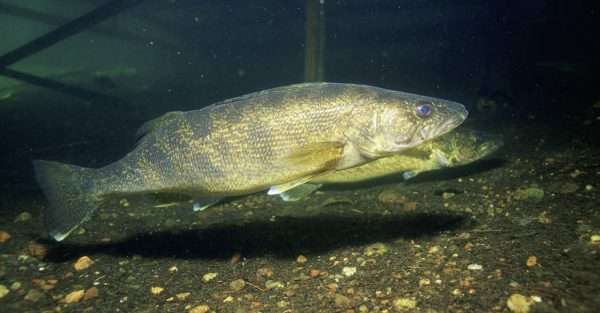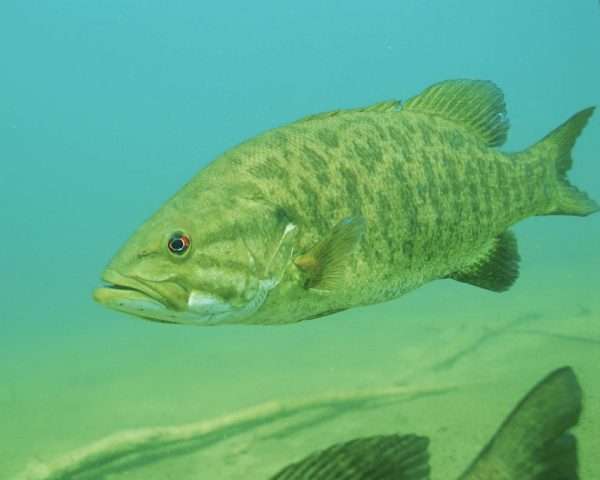Popular recreational and commercial native fish, the walleye. Credit: U.S. Fish and Wildlife Service
A popular recreational and commercial fish - the native walleye - is at risk of disappearing as invasions of the competitive, predatory smallmouth bass move into Ontario lakes, a new study from York University has found.
Walleye fish populations are diminishing as climate change warms the waters allowing smallmouth bass to move into more northern Ontario lakes, competing for similar food resources and adding walleye young to their menu choices. Smallmouth bass prefer warmer water and the colder northern lakes were historically a deterrent, but that's changing.
The findings by biology Professor Sapna Sharma in York U's Faculty of Science and Thomas Van Zuiden, a recent Master's degree graduate of Sharma's who is now a data manager and statistical analyst in her lab, have important implications. As climate change facilitates smallmouth bass invasions, fisheries in the Great Lakes region are at greater risk of collapse.
"Walleye play an important role in lake-ecosystem dynamics as top predators, and are also popular angling targets for commercial and recreational fisheries," said Van Zuiden. "Climate change poses a serious threat to their survival in Ontario lakes, and our study shows that the invasion of smallmouth bass is exacerbating the problem."
The invading smallmouth bass fish. Credit: U.S. Fish and Wildlife Service
Analyzing data from 722 lakes in Ontario, Van Zuiden and Sharma found that smallmouth bass prefer different environmental conditions than walleye. However, when walleye and smallmouth bass are in the same lakes, there are three times fewer walleye. Under future scenarios of climate change, the researchers predict that the co-occurrence of the two fish species may increase as much as 332 per cent by the year 2070, increasing the vulnerability of walleye populations across the province.
"The future is looking dim for walleye in Ontario lakes under climate change because of both habitat loss and competition from invading smallmouth bass," says Sharma. "As climate change continues to facilitate smallmouth bass invasions into new lakes, Canada's native fisheries, such as walleye and lake trout, are at greater risk of collapse. Our study illustrates the importance of including multiple environmental stressors in statistical models when attempting to understand changes in biodiversity."
The study, "Examining the effects of climate change and species invasions on Ontario walleye populations: can walleye beat the heat," will be published in the print edition of the journal Diversity and Distributions on Oct. 1.
More information: Thomas M. Van Zuiden et al, Examining the effects of climate change and species invasions on Ontario walleye populations: can walleye beat the heat?, Diversity and Distributions (2016). DOI: 10.1111/ddi.12468
Journal information: Diversity and Distributions
Provided by York University





















